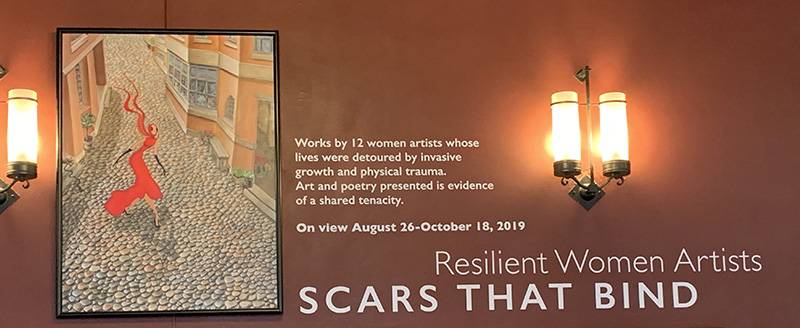“Scars are left behind often due to trauma, pain, suffering, challenge, injury, or alterations. Scars are new tissue that forms over a wound and later contracts. They are the aftermath. Scars hold us together and allow for healing. They showcase an imperfect wounded world. Scars can be hidden and internally felt. Others remain visible on the surface yet reach to the depths of the soul.”
— taken from the “Scars that Bind” exhibition statement
Making the trip to the University YMCA’s Murphy Gallery may be challenging, but I can think of no better reason to take on Campustown construction than the opportunity to experience this exhibition of the power of art, women’s art, in the face of life illness and physical trauma. The Art at the Y program continues to marry visual art to the social justice, environmental health and community engagement planks of its mission in an an accessible, yet deeply impactful way. Last year’s “Persisters” explored art as resistance, while “Queering UP the Arts,” spoke to art as visibility and voice. In “Scars that Bind,” art is resilience. And in the face of disease, it can be a lifeline.
“Scars that Bind” features work by “12 women artists whose lives were detoured by invasive growth and physical trauma. Art and poetry presented is evidence of a shared tenacity.” They are Jenny Barrett, Sandra Batzli, Debra Bolgla, Cindy Carlson, Karen Gottlieb, Barbara F. Kendrick, Melissa Lynch, Pat Baron Monigold, Bea Nettles, Lee Isaacson Roll, Sasha Rubel, Janelle Yates.
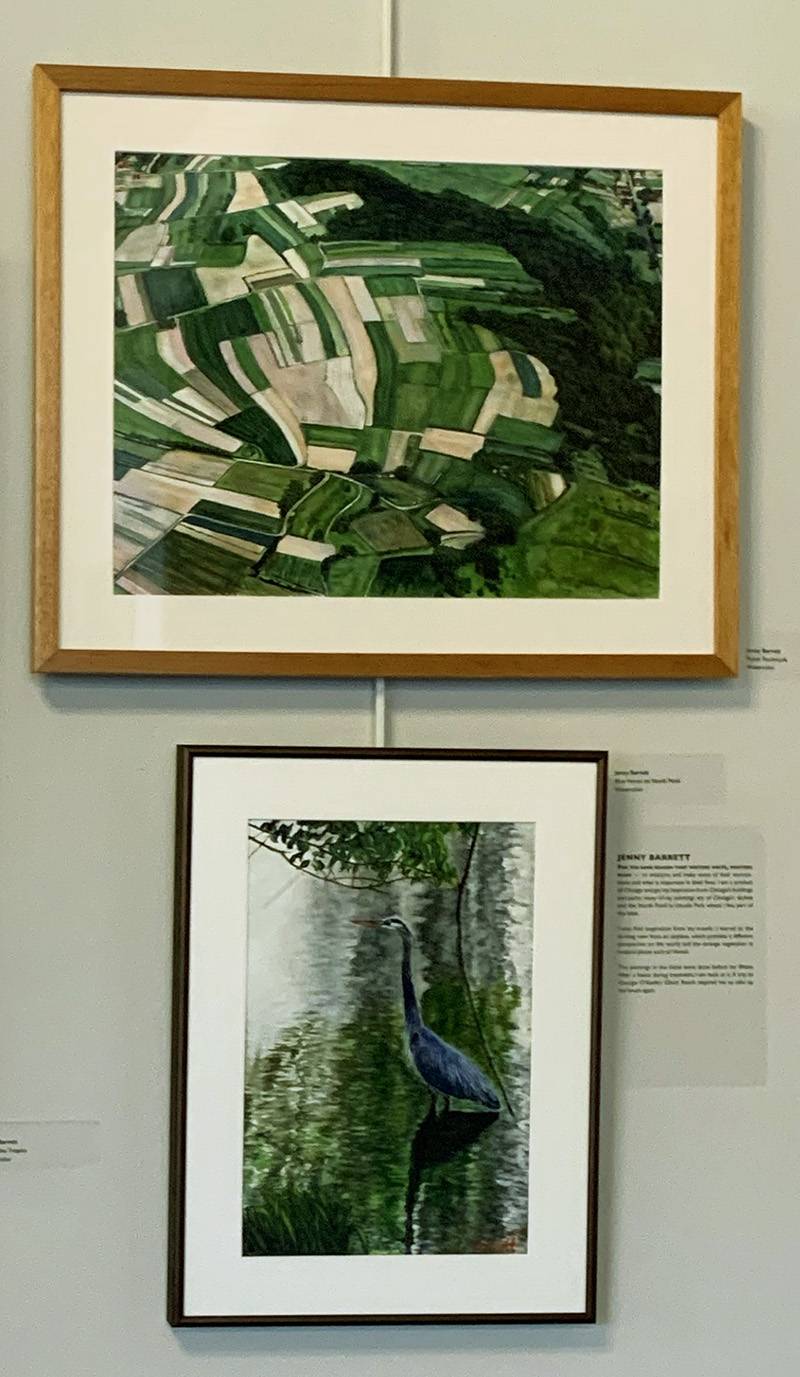
Jenny Barrett’s Polish Patchwork and Life in the Tropics, both in watercolor
I has seen several of these pieces before at the 2018 Comrades in Art (CIA) group show at Art Coop and at the 2019 “Art of Timing” show at Springer Cultural Center. And while they spoke to me then, here, together with their sisters, their voices were amplified and grew far more nuanced in conversation with each other.
And the work. The work is consistent in quality, yet diverse in medium and subject matter. In some cases illness is front and center in every aspect of subject, composition, and technique. In others it is barely visible, tacit within the artist’s motivation and determination. In a show such as this, which is so deeply contextualized by title, artist statements, there may be the tendency to see illness or struggle where the artist did not intend it. But that is the magic what happens once art is let loose into the world. It starts a conversation.
When, and not if, you go, I encourage you to spend some time “listening” to each artist’s story. They have much wisdom to share.
Reaching out to artist and designer Debra Bolga, I learned more about this show’s evolution and its particular view of the art-making process. She is as masterful with text as she is with images. Her honesty and insight are humbling.
As a culture we frequently fail to talk honestly about or to each other about illness and death. Whether it is our own or that of someone close to us, loss leaves us at a loss for words or deeds. Those of us without cultural or religious rituals to frame these difficult experiences can look to this kind of brave work for guidance and inspiration. Art, when it is this honest and this beautifully executed, can fill that void. All that said, it seems only right that I turn the mic over to Bogla herself and let her thoughtful words tell the story behind “Scars that Bind.”
On the show’s inception
For Melissa Lynch, her art methods were altered as she struggled with survival. Painting, drawing, and ceramics aided her transition through the impact of a stage IV breast cancer diagnosis and eventual assault upon her body and underlying fears to follow. Her creative drive allowed her to mentally break through the constraints of the disease that would soon take her beautiful life.
The narrative and scope of this exhibit has continued to grow. The concept began with a focus on one artist, one woman, one breast cancer diagnosis. As I spoke with friends I was stunned by the number of women artists coming forward with their own stories of medical trauma.
On the show’s evolution
The exhibit concept of Scars that Bind evolved from one artist, one woman, one breast cancer diagnosis. Art methods were altered as she struggled with survival. Painting, drawing, and ceramics aided her transition through the impact of a stage IV breast cancer diagnosis and eventual assault upon her body and underlying fears to follow. Her intuitive visionary skills allowed her to mentally break through the constraints of the disease that would soon take her beautiful life.
The size and scope of the exhibit grew as friends came forward with names of other friends. It was astonishing, the number of women artists with their own stories of medical impact who had been propelled onto an alternative path as a result of an intrusive collapse of the norm. As artists their visual and literary process to deconstruct, defy, document, mend, or even accept their circumstance, uniquely links them together. Emphasis can be seen on how the symbiotic relationship of trauma and harmony coexist side by side.
Nine of the artists are survivors, while we remember three, Melissa Lynch, Lee Isaacson Roll, and Janelle Yates, and who remained steadfast despite immovable obstacles.
On the show’s intention and the varied role art played in these women’s journeys
Some of the artists found solace and sanctuary through the discovery of form and space. Their work follows a journey and an affirmation of life. For others, the act of innovative thought offered an energy field…a place to release, to be defiant, to feel rawness. We see fragmentation, human texture, and erosion.
Bea Nettles bares a vulnerability, a compartmental divide, and a sense of submerging into the landscape in her compelling black and white print reflective, yet empowered, by her hair loss post chemo treatment for breast cancer.
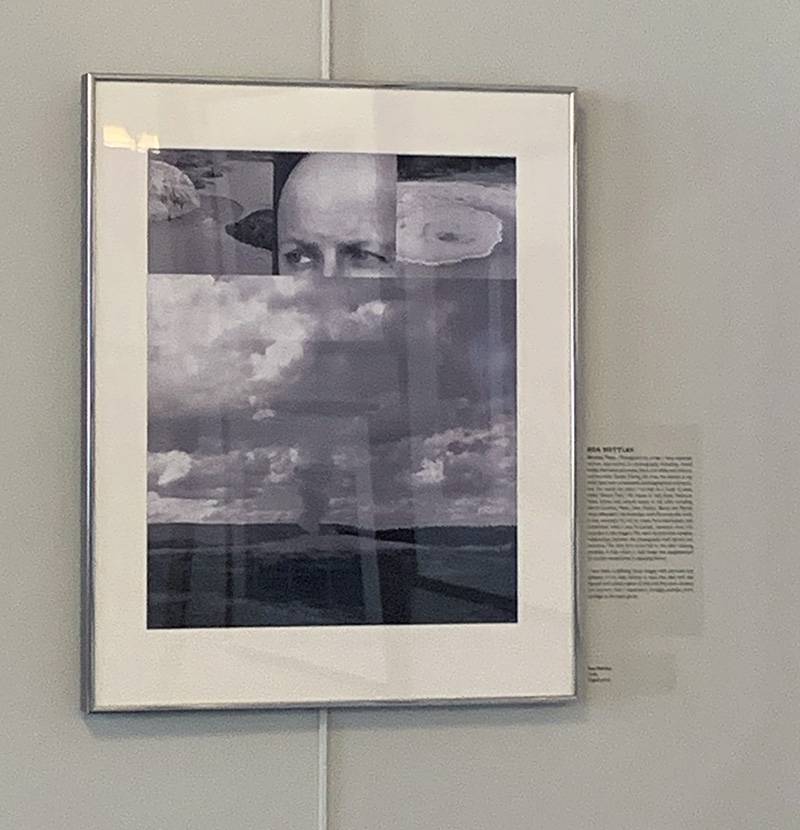
Bea Nettles’ digital print, Hole
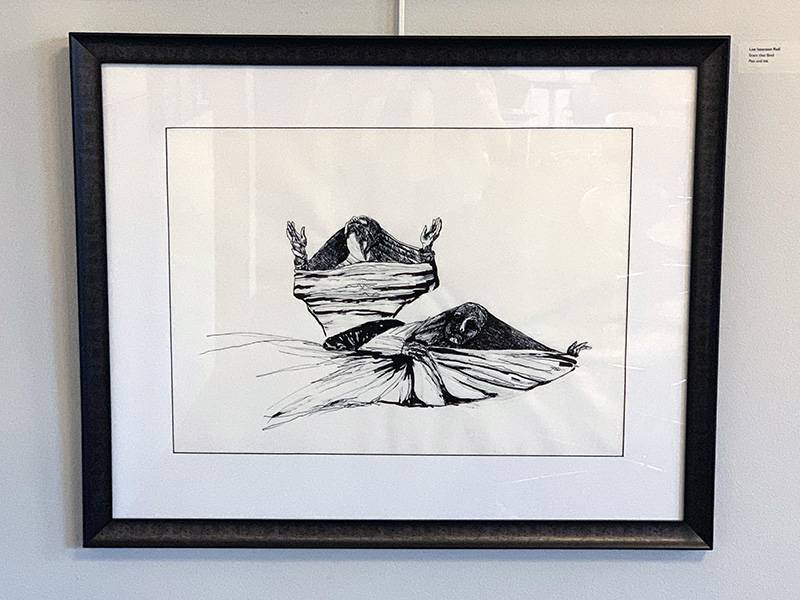
Lee Isaacson Roll’s Scars that Bind
Cindy Carlson noted that since her challenge with breast cancer, much of her work has been representative of the deterioration of tangible objects that have gained character through exposure to harsh elements and the passage of time. “As I worked on these watercolors during my recovery, I came to realize that my scarred body shows some of the same attributes as the weathered and aged objects in my paintings—the rusted latches, the
corrosion of the bridge, and the fragility of the splintered wood, the peeling paint, and the cracked glass.”
For Sandra Batzli, her body embattled in a duel with lymphoma, embarks on finding what nourishes her soul. The stunning images she paints of her time exploring the Salt Fork are what sustain and renew her.
Melissa Lynch foreshadowed, perhaps, things to come with this artist statement written shortly before her terminal diagnosis: “I’m seeking. My current work is an exploration of: materials, subject matter, and latent memories, to connect on a deeper level, find my voice, open up, and by so doing, discover and rediscover the struggles and pure delight in making. The exploration of the human psyche interests me…loss, scars, growth, fear,
abandonment, healing, darkness, light, and the idea of strength through vulnerability. One theme seems to keep coming up…sacrifice perfection for joy and freedom.”
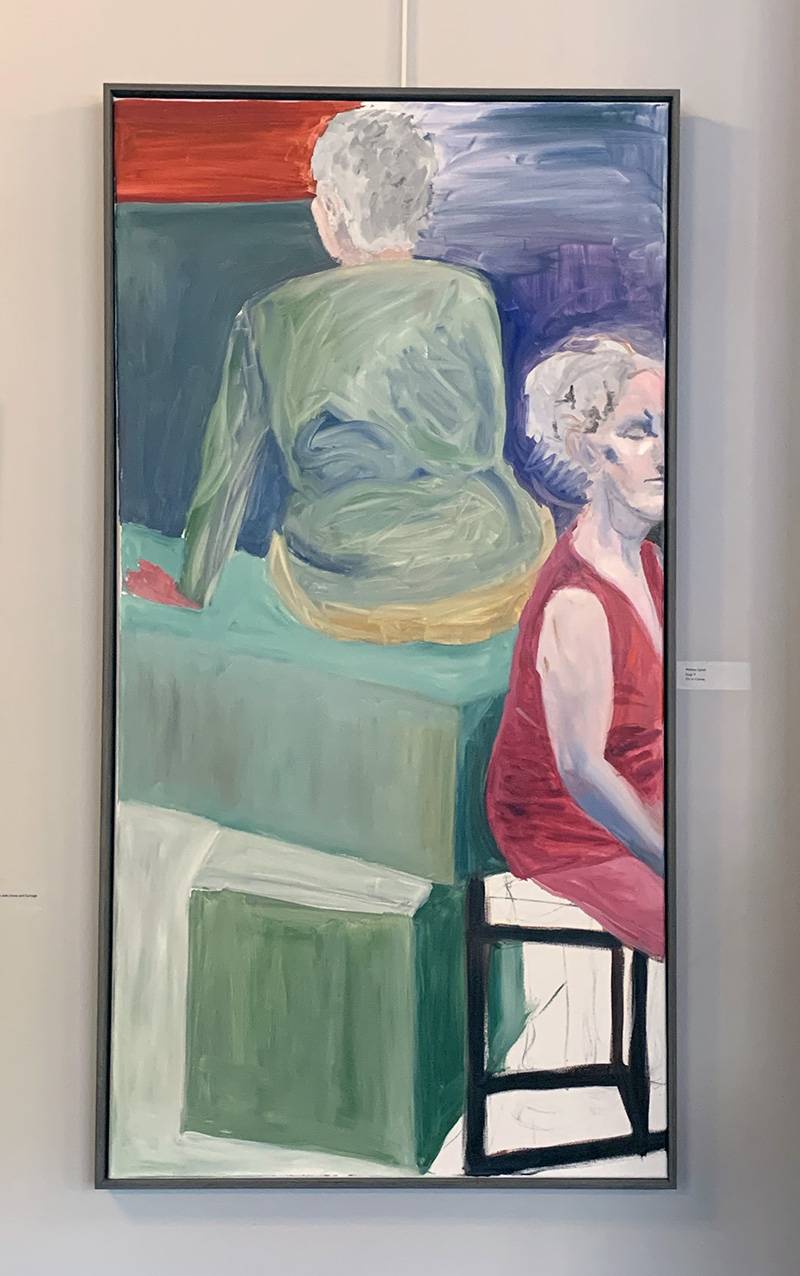
Melissa Lynch’s unfinished Stage V
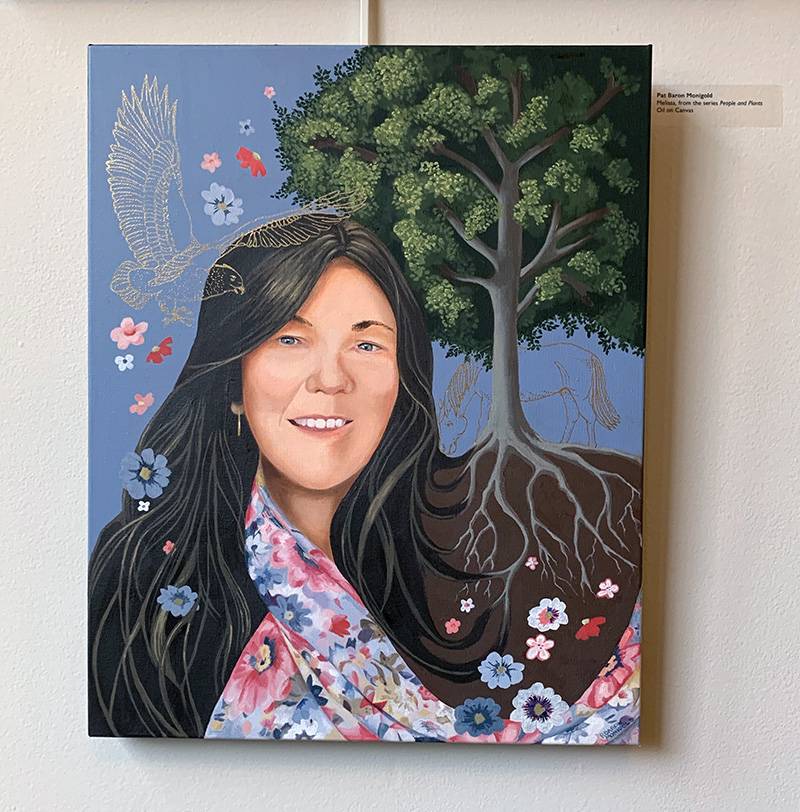
Pat Baron Monigold’s portrait Melissa makes a poignant contrast to the Lynch’s self-portrait above.
On her own experience of art-marking through the lens of acute illness
Mine was the discovery of a very large, benign but potentially deadly, brain tumor that is predominantly found in women. My visual journal of the experience evolved into an artist book and image narrative. Visual outlets were my sanctuary, my cocoon, and my way of remaining grounded. The illustrative presence reveals the essence of life’s flawed exquisiteness as parts simultaneously work in tandem to form a whole.
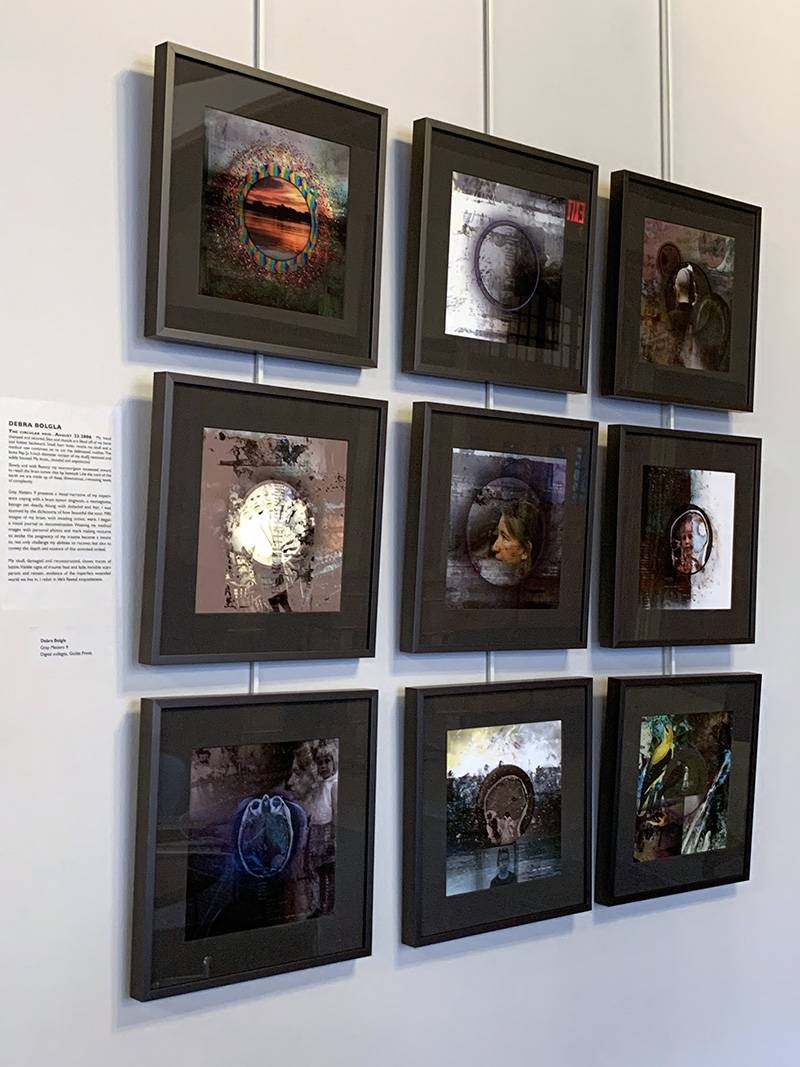
Debra Bogla’s Grey Matter series merges milestone photos of artist with images from her own medical records
Janelle Yates wrote poetry in her last year. Her stunning, piercing words…the powerful letterforms telling thenstory of an incredible depth of a creative soul with stage IV breast cancer, I envision, could weave and be positioned on the walls amidst the visual art in the exhibit to enhance and vocalize the narrative.
My deepest gratitude to the artists for sharing this intensely personal work, and to the Art at the Y for a cultivating a community art program that enables these important conversations.
I’ll leave you with this verse from Janelle Yates’ “January Psalm.” May it inspire you to make your way to the Murphy Gallery and enter the conversation yourself.
Blessed is fire contained in stove
and hearth, its turbulence and clarity,
solace and salvation. And let us praise
its sustaining embers, its essence
like the human soul in a harsh season.
Scars that Bind / Resilient Women Artists
University YMCA
Murphy Gallery / Lobby
1001 S Wright St, Champaign
August 26th through October 18th
Closed weekends
Photos by Debra Domal. Cover image includes Sasha Rubel’s “Cobblestones.”








